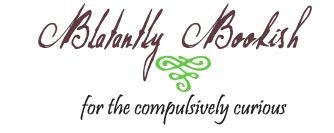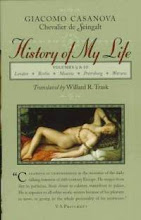It is about forbidden passion—forbidden love even—according to some readers. It has added a word to the English language that signifies a sexually precocious young girl. It has sparked two film adaptations, countless Halloween costume designs, and an impressive amount of controversy. It has been on my "to-read" list for ages. I read it. I loved it.
One thing I want to say before I go any further is that Lolita is not for everyone. Although I'm sure its reputation proceeds it, you should know that it is an erotic book (but not erotica!) in the sense that man in his late 30s sexually desires a girl of 12. Hence, the controversy. To obtain its status as a classic novel, however, it would have to be more than a one dimensional, erotic book—and it is. So much more.
I think if your first inclination after reading this post is that you would like to read it, then you should, if not, then you shouldn't. Pretty much the same as with any book, except that people get weird with classics. They feel obligated to read them sometimes. Don't.
Even though it was written in English rather than Vladamir Nabokov's native Russian, this book is a stylistic masterpiece, in my opinion. Its rich eloquence makes it hard to believe that English was not Nabokov's first language. It is written in the first person from the perspective of its notorious unreliable narrator, who chooses to go by the pseudonym Humbert Humbert.
He is middle-aged, European literary scholar who moves to a small New England town in 1947 in hopes that he will be able to write in peace. Renting a room in the home of Charlotte Haze, a widow, he is immediately mesmerized by her precocious twelve year old daughter, Dolores. She becomes his reason to stay in a place that he would have left immediately otherwise. His obsession grows, and although he tries to fight it at first, events turn unexpectedly in his favor, partly of his own devising, partly not.
I have been known to put a book back on the shelf if I disliked the opening paragraph, but the opening of this story is one of the best I've ever read:
Lolita, light of my life, fire of my loins. My sin, my soul. Lo-lee-ta: the tip of the tongue taking a trip of three steps down the palate to tap, at three, on the teeth. Lo. Lee. Ta.Lolita is often categorized as a tragicomedy, because Humbert Humbert's narration isn't without its humorous moments. His wry observations of American culture light up the story, which is often disturbing and, yes, tragic in its way.
She was Lo, plain Lo, in the morning, standing four feet ten in one sock. She was Lola in slacks. She was Dolly at school. She was Dolores on the dotted line. But in my arms she was always Lolita.
Did she have a precursor? She did, indeed she did. In point of fact, there might have been no Lolita at all had I not loved, one summer, a certain initial girl-child. In a princedom by the sea. Oh when? About as many years before Lolita was born as my age was that summer. You can always count on a murderer for a fancy prose style.
Ladies and gentlemen of the jury, exhibit number one is what the seraphs, the misinformed, simple, noble-winged seraphs, envied. Look at this tangle of thorns.
Nabokov was unable to find an American publisher for Lolita when he finished writing it in 1953, so he published it in Paris in 1955. It was later banned in Britain and France in 1956 for two years. Finally, it was published without much resistance in New York in 1958. It was the first book since Gone with the Wind by Margaret Mitchell to sell 100,000 copies in its first three weeks of publication.
Below I have included an interesting video from the 1950s CBC program, Close Up, which was known for addressing controversial issues. In this episode, which is in two parts, Vladamir Nabokov discusses Lolita with the hosts. I find it especially interesting that Lolita was published in the 1950s in America, which is arguably the most socially repressed decade of the 20th century. The discussion in the video is surprisingly open-minded. To continue to the second part of the video, click video 2 when this video ends.















